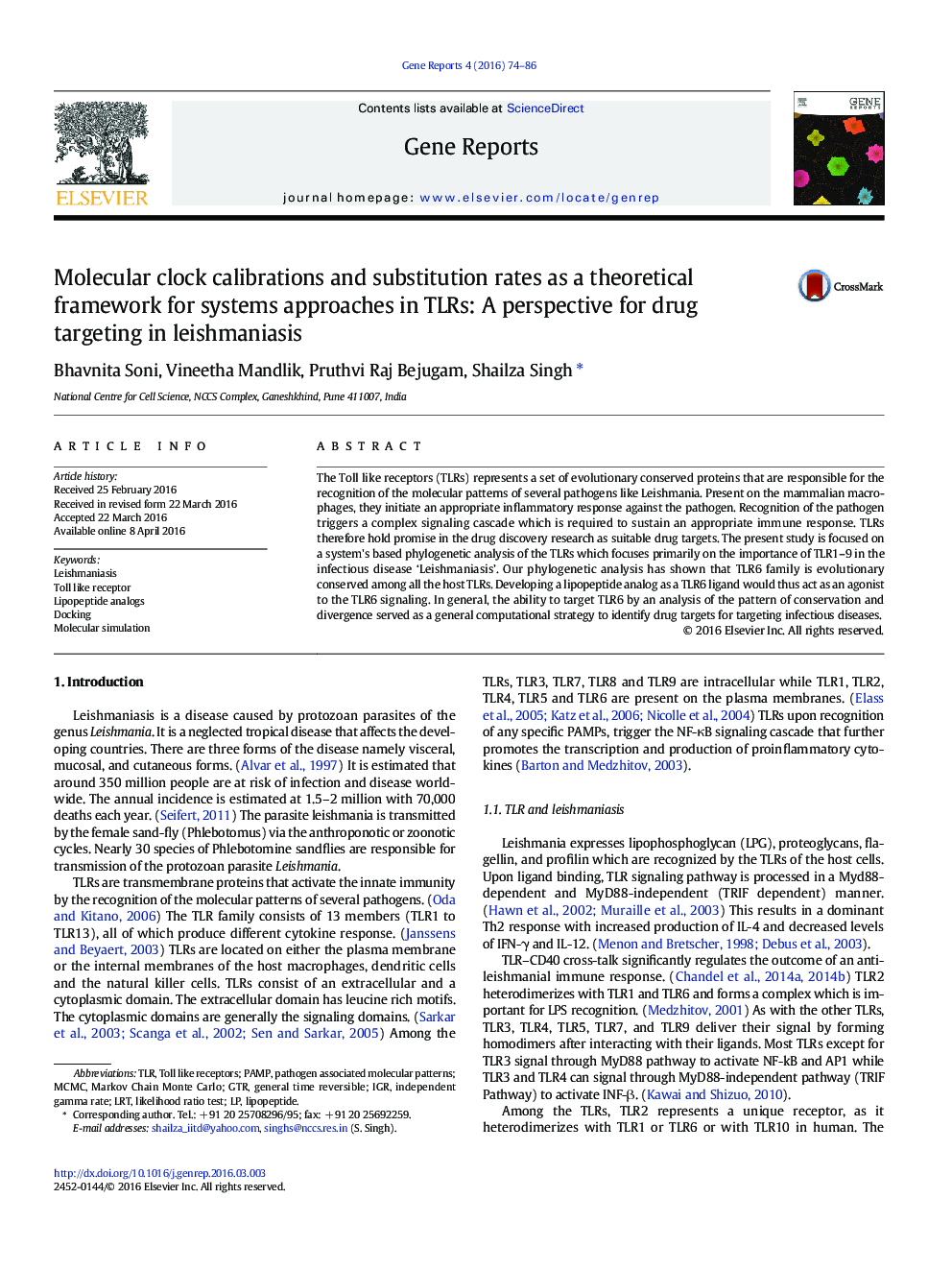| Article ID | Journal | Published Year | Pages | File Type |
|---|---|---|---|---|
| 2820485 | Gene Reports | 2016 | 13 Pages |
•TLR6 as an important drug target in Leishmaniasis•Phylogenetic analysis and molecular clock calibration showed TLR6 as highly conserved in host.•Lipopeptide analog serves as potential agonist for TLR6.
The Toll like receptors (TLRs) represents a set of evolutionary conserved proteins that are responsible for the recognition of the molecular patterns of several pathogens like Leishmania. Present on the mammalian macrophages, they initiate an appropriate inflammatory response against the pathogen. Recognition of the pathogen triggers a complex signaling cascade which is required to sustain an appropriate immune response. TLRs therefore hold promise in the drug discovery research as suitable drug targets. The present study is focused on a system's based phylogenetic analysis of the TLRs which focuses primarily on the importance of TLR1–9 in the infectious disease ‘Leishmaniasis’. Our phylogenetic analysis has shown that TLR6 family is evolutionary conserved among all the host TLRs. Developing a lipopeptide analog as a TLR6 ligand would thus act as an agonist to the TLR6 signaling. In general, the ability to target TLR6 by an analysis of the pattern of conservation and divergence served as a general computational strategy to identify drug targets for targeting infectious diseases.
Graphical abstractFigure optionsDownload full-size imageDownload as PowerPoint slide
